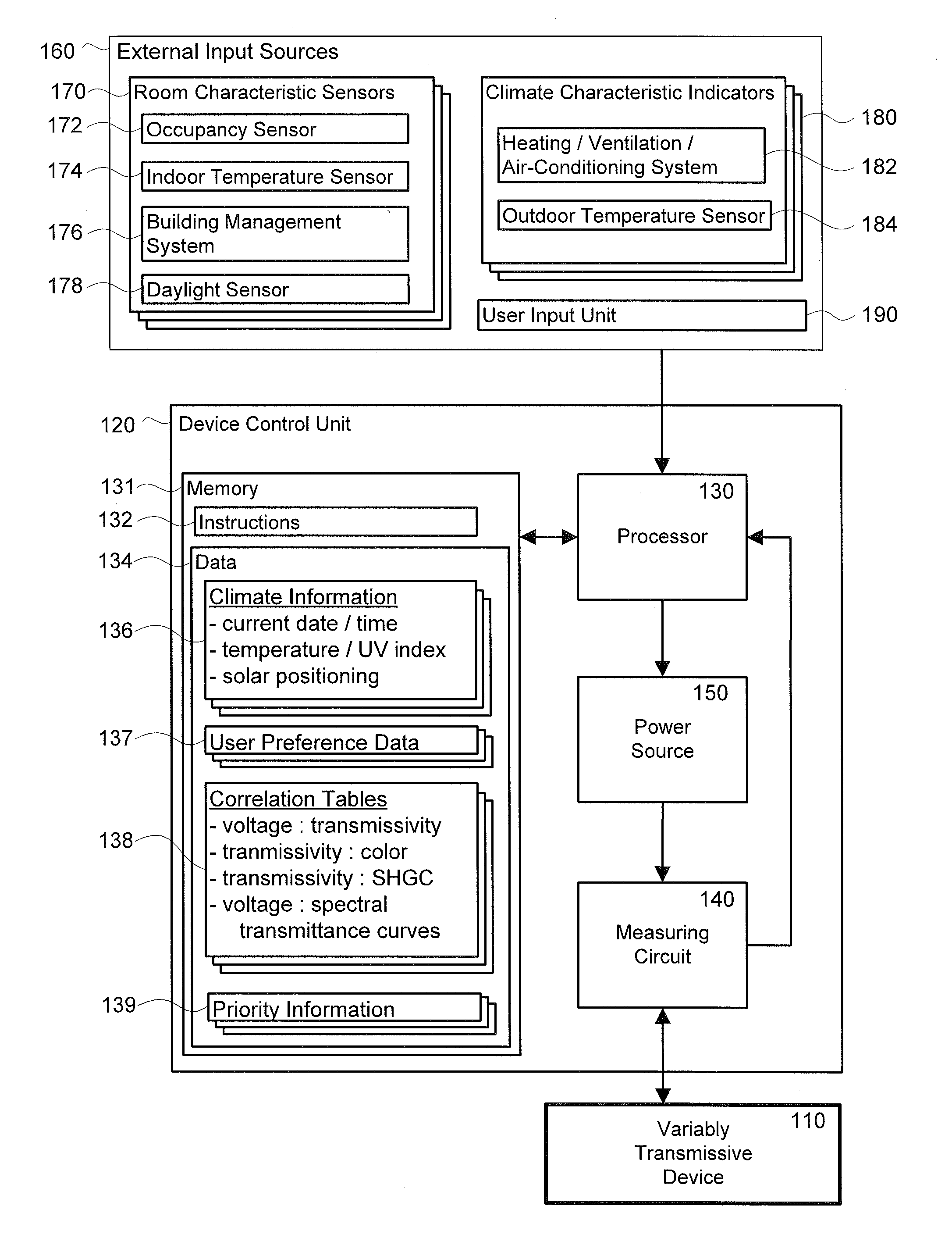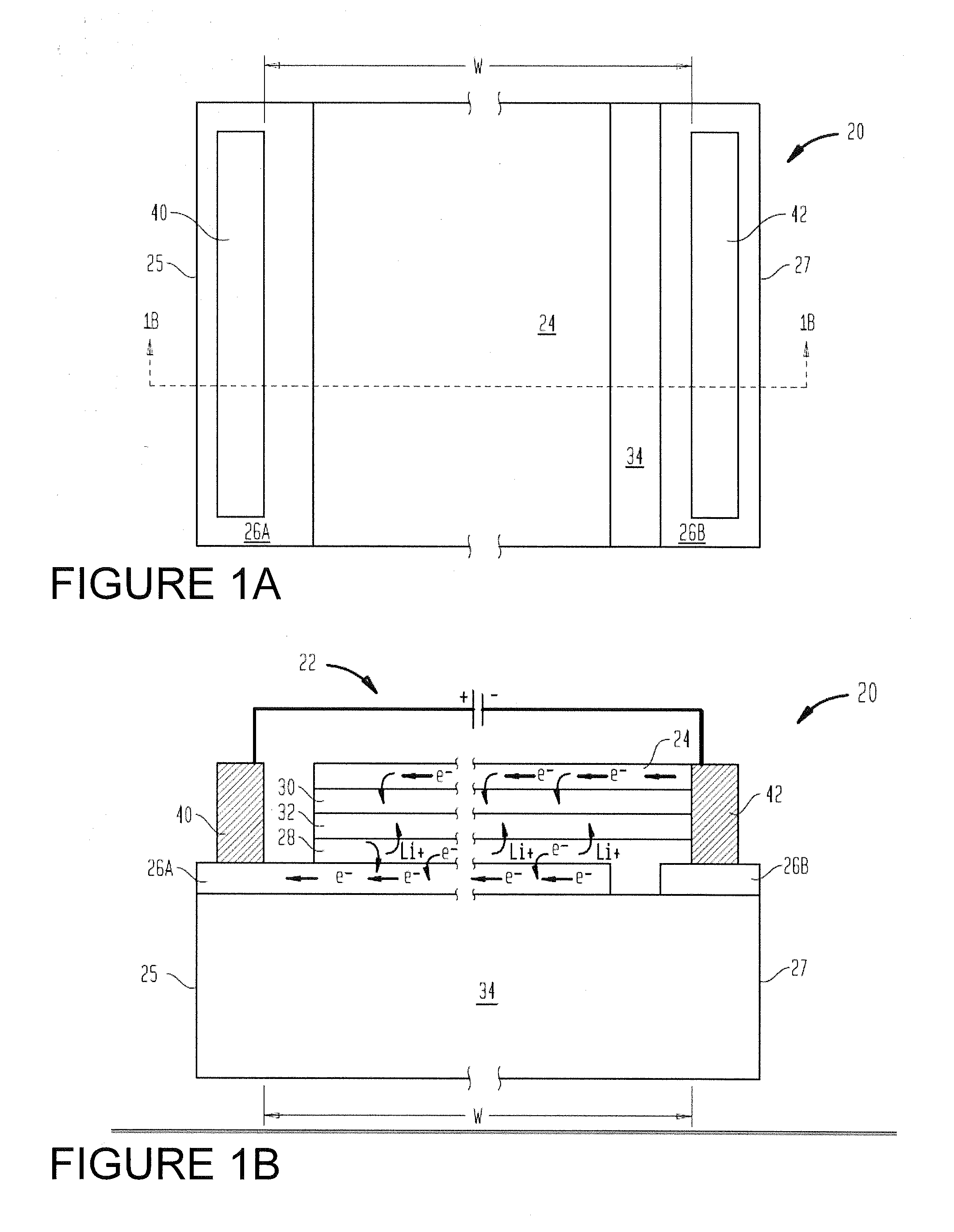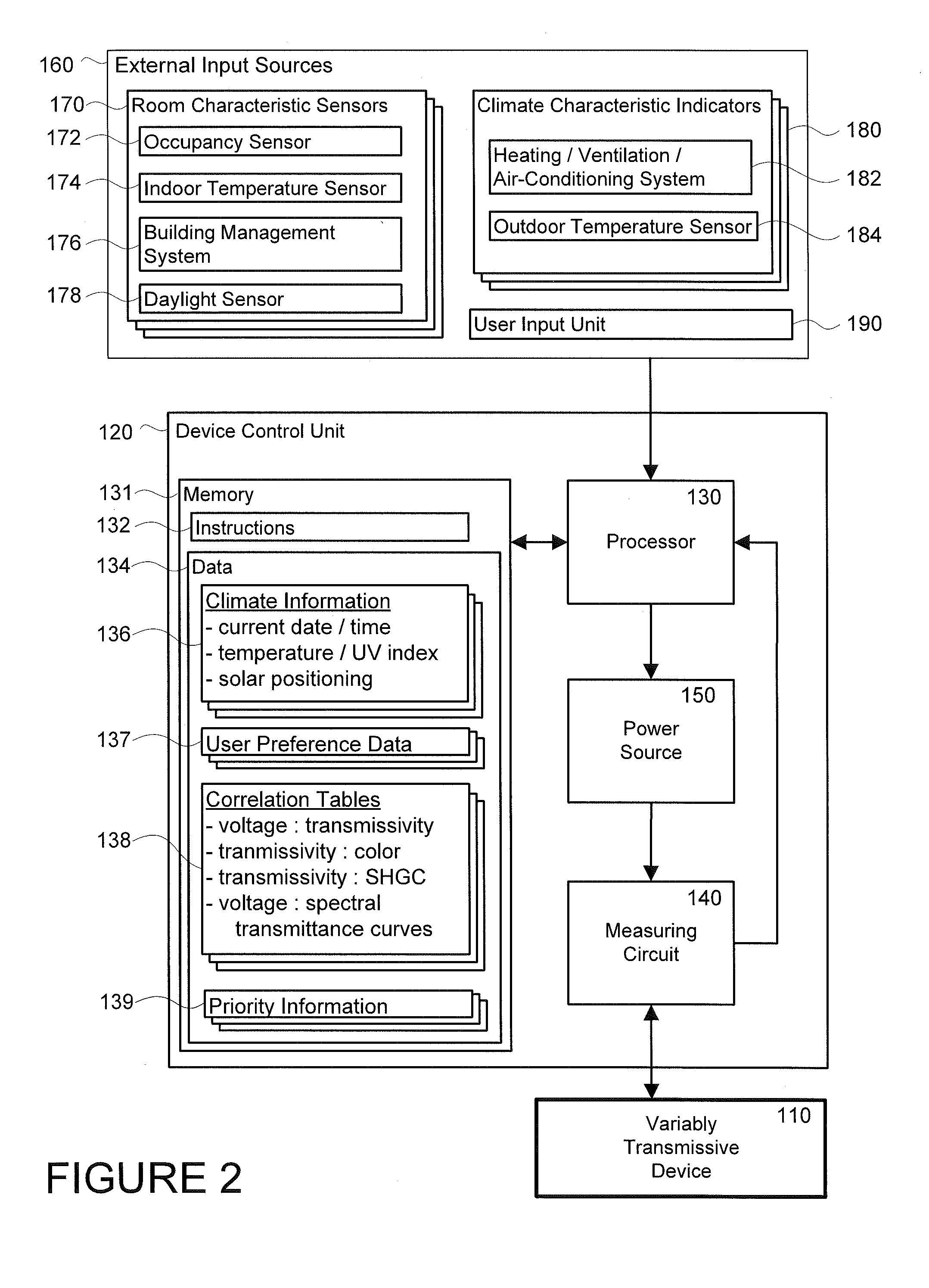Control System For Color Rendering Of Optical Glazings
- Summary
- Abstract
- Description
- Claims
- Application Information
AI Technical Summary
Benefits of technology
Problems solved by technology
Method used
Image
Examples
Embodiment Construction
[0040]One object of the present invention is to provide a system for controlling an electrochromic or other variably transmissive device to maintain an acceptable illumination color spectrum in an interior space associated with the device. It has been found that in most situations maintaining between about 5% and about 25% of the surface area of the device in a high transmittance state (e.g., about 32% transmissivity or above, about 40% transmissivity or above, about 50% transmissivity or above, about 55% transmissivity or above, about 60% transmissivity or above, the highest transmittance state that the device is capable of achieving, within about 10% transmittance of the highest transmittance state, etc.) provides enough color neutral light to maintain an acceptable illumination color spectrum, even while the remaining about 75% to about 95% of the device is in a low transmittance setting (e.g., about 60% transmissivity or below, about 55% transmissivity or below, about 50% transm...
PUM
 Login to View More
Login to View More Abstract
Description
Claims
Application Information
 Login to View More
Login to View More - R&D
- Intellectual Property
- Life Sciences
- Materials
- Tech Scout
- Unparalleled Data Quality
- Higher Quality Content
- 60% Fewer Hallucinations
Browse by: Latest US Patents, China's latest patents, Technical Efficacy Thesaurus, Application Domain, Technology Topic, Popular Technical Reports.
© 2025 PatSnap. All rights reserved.Legal|Privacy policy|Modern Slavery Act Transparency Statement|Sitemap|About US| Contact US: help@patsnap.com



